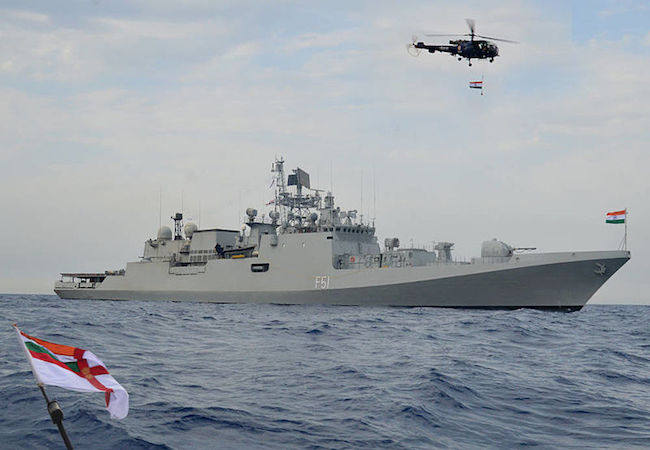
By Shakir Baacha
Strategic stability in a chaotic environment like South Asia remains solely dependent on a stable deterrence equation between adversaries. India’s provocative strategy also known as, Cold Start Doctrine, aims to launch a limited offensive conventional attack against Pakistan, with an intent to cause significant damage to the Pakistani armed forces deployed along LOC. For quite sometimes, India has been trying hard to turn this theory into practice against Pakistan. At the same time, India has been spending massive on modernization of its force posture. In recent years, India has spent billions of dollars to buy latest jet fighters, warships, missiles, submarines and other heavy military tech. Consequently, as per SPRI estimates, India has emerged as world’s largest weapons importer.
However, Pakistan, without indulging in an expensive arms race, compelled to take necessary measures to counter any Indian misadventure. In this regard, Pakistan’s nuclear capability has been playing vital role in maintaining deterrence equation against militarily mighty India.
Over the period of time, nuclear deterrence in South Asia has been challenged by unprecedented developments in India’s defense posture. For instance, in order to create room for conventional conflict, India has introduced CSD to punish Pakistan in a low-scale conflict. The ‘Cold Start Doctrine’ is India’s limited-war strategy, formulated to attack Pakistani territory promptly without triggering a nuclear war. For that it seeks to mobilise its troops, using limited armoured thrusts with infantry and the necessary air support.
In order to counter this flawed and risky doctrine, Pakistan has developed short-range nuclear weapons commonly known as Nasr Responding to this offensive doctrine Pakistan had tested ‘NASR’ missile which is a Multi Tube Ballistic missile. India, by operationalizing such risky doctrine, wanted to take advantage of its superior military might in a low-scale conflict. However, its cold start met a cold-feet when Pakistan successfully test-fired its Nasr missile.
NASR was developed to add deterrence value at shorter ranges with high accuracy, shoot and scoot attributes for quick response.”. It has been developed as low yield battle field deterrence. NASR is deployed to deter and respond to India’s CSD.
In the wake of India’s hegemonic aspirations, Pakistan needs to have an advanced and well equipped military might to maintain effective deterrent against its adversary. Indian concept of war below the nuclear threshold adversely affected the strategic stability of South Asian region and this lead region to a never-ending arms development. India’s aggressive designs have tilted balance of power in Indian favor which must be acknowledged before the gap widens. Pakistan has to enhance its military as well as nuclear capabilities to meet evolving threats emanating from India.
India and Pakistan have been involved in several conflicts that continue to pose the risk of inadvertent war. From territorial conflicts like Kashmir to current wave of terrorism, the bitterness has deeply rooted in bilateral affairs. That means, risk of a nuclear escalation in South Asia is much higher than any other place in the world. However, unlike in the past, any future war between the two countries, no matter how limited it might be, will carry potential consequences for a nuclear brinkmanship.
Pakistan’s nuclear deterrence is based on Credible Minimum Deterrence and without entering into an arms race with any other country, Pakistan has successfully maintained nuclear deterrence against much larger adversary.
However, it doesn’t mean that Pakistan is unaware of the evolving security challenges in the region. Pakistan is clearly aware of regional repercussions of Indo-US strategic partnership and its repercussions on South Asian environment. Apparently, Indo-US strategic alliances is directed against China but in reality it’s the only Pakistan which will face the music.
These disturbing trends are not just specific to Indian conventional buildup. According to latest estimates India would be able to increase its nuclear arsenal from 100 warheads currently to 300-400 warheads in the next five years. Indian technological advancement in the conventional and nuclear field will bring qualitative and quantitative transformation in the Indian Military. All these developments under BJP government clearly lays down a path towards an unending arms race in the region. It will be a costly path for the India and sooner or later its adverse impacts will shake New Delhi’s war mongering caucus.




